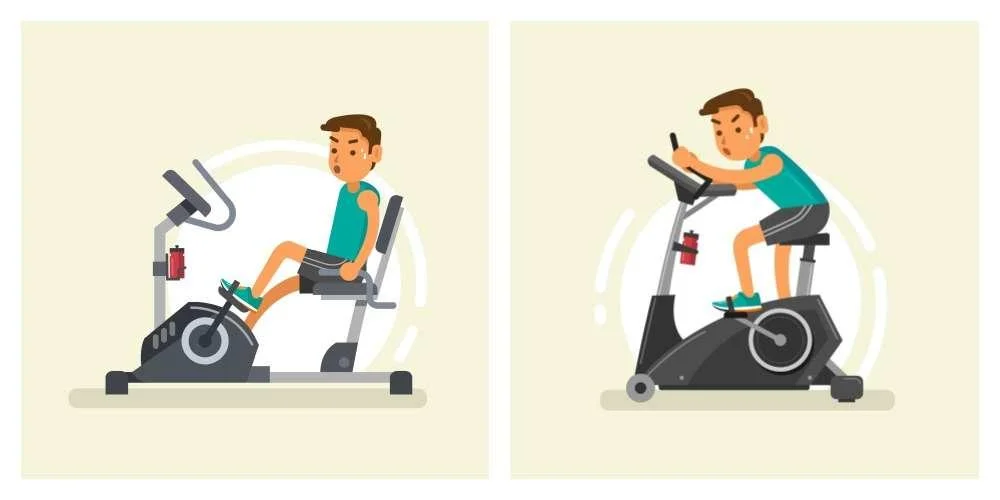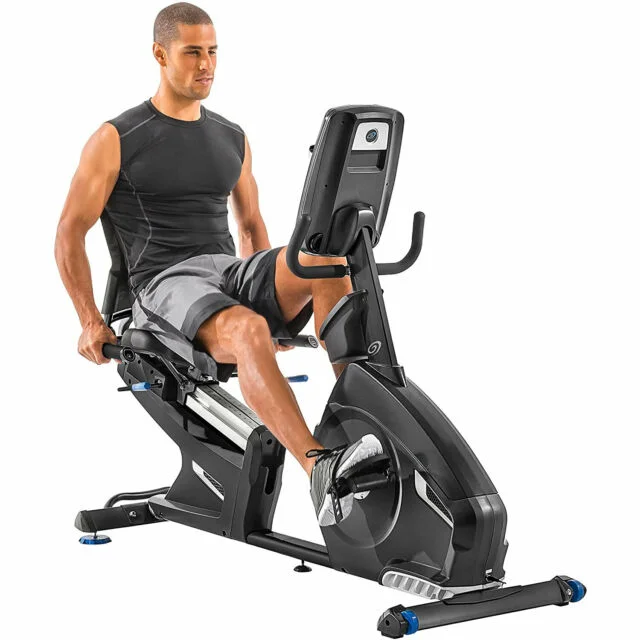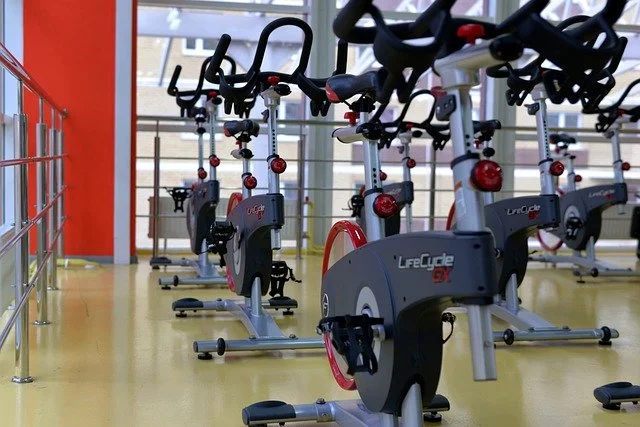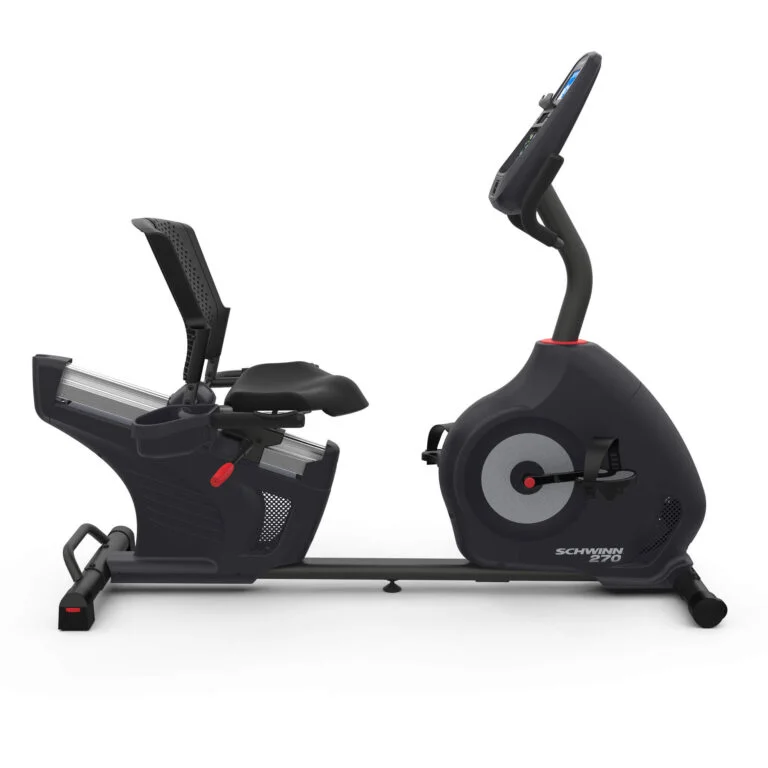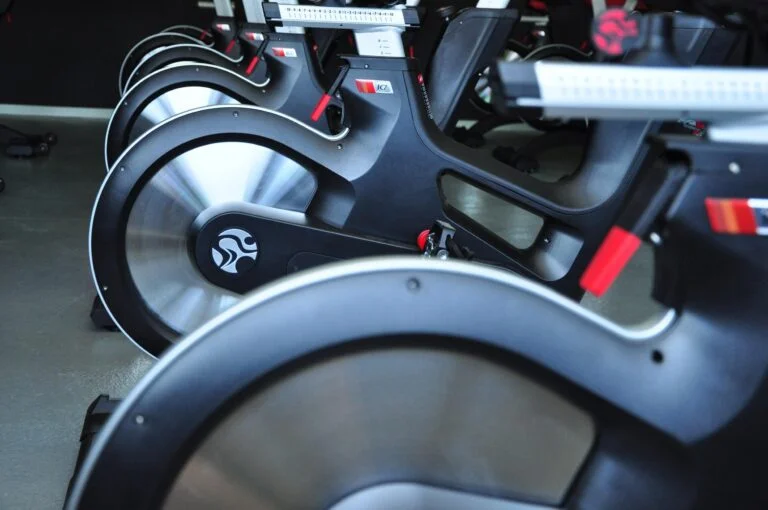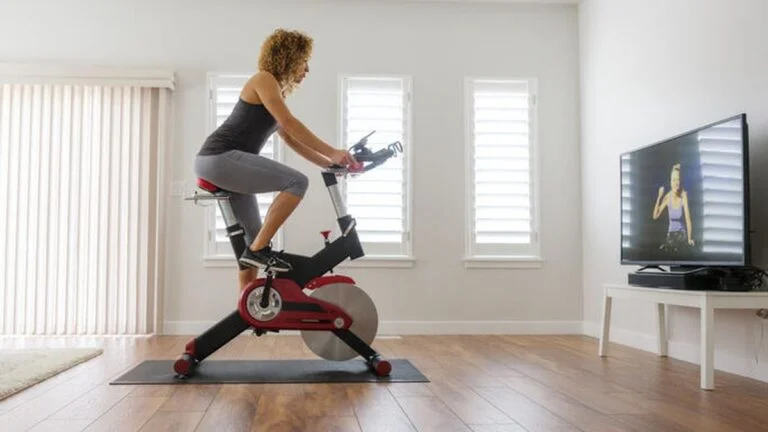The Perfect Choice Between Recumbent Exercise Bike vs Stationary Upright Bike
Cycling is a great way to stay healthy and fit compared to other routines, but you may not always have the right conditions outside, or maybe the gym is too crowded for you.
Therefore you have decided to build a small home gym just for you. After seeking advice from friends, they told you that a stationary system is much better than typical heavy gym equipment.
Introduction
Now, which do you prefer? There are all kinds of stationary equipment that sorely focus on your cardiovascular system.
If you are here, your choice was obviously a stationary bike rather than treadmills or rower. Stationary bikes are great for cardio and muscle toning, they are generally much safer than other gym equipment because they don’t have any weights hanging off them during workouts, therefore are easier on your body too.
When it comes to stationary bikes, there are many types and designs, but the two most popular ones are the recumbent bikes and the upright bike.
Both have an outstanding reputation among enthusiasts in the fitness world. Although they serve the same purpose, their structural differences make them suitable for different kinds of people.
Recumbent bikes are known for comfort and upright bicycles for their performance.
Now to clear your doubts once and for all, let’s dive into the juicy details.
A Brief Overview
Recumbent bikes are that popular among the public even though they offer a host of new features. One of the most critical factors that separate a recumbent bike from others is the seating position.
They have a reclined seating posture that supports your back and the lower spine. The seat itself is very comfortable with most having a large, broad padded bottom.
They can adjust to any kind of person no matter the size or age.
The bike is designed in such a way that the pedals are positioned above the flywheel away from the user’s body.
Your legs will stretch horizontally without the weight of your body acting on your knees. Recumbent bikes are light on all the joints, and the weight of the body is distributed equally over the large surface area that is your entire back unlike in stationary upright bikes where all the weight is focused on the tail bones and the butt.
In terms of muscle development, the seating posture works the hamstrings, glutes, calves and the quads simultaneously, so you get a more evenly balanced workout and lower body muscle growth.
The seating posture also reduces the risk of injuries greatly because no one body part is subjected to tremendous stress at any time. Therefore the recumbent bike is an excellent choice for people with medical conditions or back joint pains.
Recumbent bikes, in short, offer maximum versatility with the least risk of injuries while working out.Depending on the price they come with a host of new features that is very convenient for beginners and experts alike.
Stationary upright bikes are prevalent and are known by all professional athletes. Each year newer models are released with more features almost on par with recumbent bikes that improve your training experience significantly.
In general upright bikes offer more freedom and space to push yourselves in terms of speed. The seating posture is the same as that of a regular bike; therefore, you can stand up on the pedals to work your leg muscles harder.
You change your seating position from time to time, as mentioned before, to add variety to your workouts.
One thing stationary upright bikes have going for them is the cost. They are cheaper than recumbent bikes.
They are designed to be light and compact, some even can be folded for portability. Recumbent bikes are more massive and priced higher because most of them, even the cheaper models, have magnetic flywheels meaning recumbent bikes are so silent you can hear the shoelaces moving.
Since the seating posture is the same as a regular bike, most people who participate in cycling competitions choose this bike for training their body to endure posture. The pedals position allows the body to apply more force in a more familiar manner.
By the way, this bike should not be used by the elderly or people with injuries as it is rough on the joints and your spine will stay curved for extended periods giving you back pain. A healthy individual can take full advantage of this design, but I am afraid it will only cause more pain to those with injuries.
Let’s look at the differences between the two more closely.
Features and Differences
Comfort
Would you use an exercise bike that gives you a sore butt, joint pain every time you use it? Probably no, that would work against your progress. That’s why it’s essential to choose a comfortable exercise bike that you can use for long hours without any unnecessary pain.
When it comes to comfort, the recumbent exercise bike wins hands down. The whole concept of the recumbent bike is centred around performance with ease. All the seats on recumbent bikes are larger and broader than that of a stationary upright bike. A decent recumbent bike has padded bottom, additional support for the back and vented backrest to cool you off during intense workouts.
The seats have a fantastic adjustment system that allows people from 5′ to 6’4″ to comfortably use the machine without their height becoming a problem. The seat design is like that of a piece of furniture, you can rest on it without any effort.
On upright bikes, the seats are small, and no amount of padding will relieve the pressure on your back. Like I said the entire weight of the body rests on your tail bones, the posture stresses your joints. The shoulders also come into play as you use the whole upper body to get maximum force to the pedals.
Muscles engaged
In terms of muscle activation, both do a pretty good job, the lower body is pushed, and your muscles will feel the heat. But the stationary upright bike does a little more than the recumbent bike in this aspect.
Recumbent bikes have a reclined comfortable seating position with back support, meaning that the core muscles of the user (abs, chest) are not used a lot. You need not even use the handlebars or your shoulders, the large seat makes you stable enough to train with only your legs firmly on the pedals. While this is seen as a drawback, you can use your free hands to read a book or use weights at the same time keeping your lower body engaged, that’s why recumbent bikes are seen as versatile.
Upright bikes, on the other hand, have a design similar to a standard bike, so you need your hands on the handlebars to keep you stable; otherwise, the machine will start to wobble. The seating position puts your upper body weight on the handles, this engages more muscles. Along with the Quads, Hamstrings, Glutes and Calves that the recumbent bike also works on, the upright bike adds the abs, shoulders, triceps and forearms into the mix.
In short upright bikes activate the upper body muscles as well as the lower body which makes it an excellent choice for professional cyclists who need the upper body strength to control their bikes on the road at high speeds.
As it works on both upper and lower body, the impact on the body is great, greater than an elderly person can handle for long periods.
Flywheel
The resistance between the road and the tire is simulated by the flywheel on an exercise bike.
The resistance of the flywheel can be adjusted in various ways.
On a recumbent bike, the flywheel is of magnetic resistance, you simply turn a dial or knob to set your resistance level. The magnetic resistance also allows the console to control and set the resistance for preset workout programs. One more advantage of the magnetic flywheel is the silent operation since there is no physical material scrapping against the flywheel, no noise is produced except the sound of the crack system.
In an upright bike, you have to tighten the knob and feel the correct resistance; there are no markers to tell you anything. They are noisier, the wear and tear is also more significant.
There are upright bikes with magnetic flywheels, but they are costly and sacrifice other features to make it more affordable.
Design and the risk of injury
Injuries on an exercise bike are mainly caused by overestimating your body and pushing it in the wrong direction. The most common seven injuries that befall a user can be prevented with a recumbent bike.
Let’s check out the details of those common injuries and solutions.
Saddle sores have plagued both cyclist and exercise bike users for a long time. The friction and weight between the seat and skin create discomfort after a short period. You have to either replace the seat with an aftermarket gel insulated softer one or buy cycling trunks.
Neck and shoulder pain caused by hunching your shoulders over the han\dle over long periods.
Wrist pain caused by putting stress on your wrists while standing up and pedalling.
Hip pain is not that common, but the main reason behind it is a terrible posture which puts stress on the joints.
Ankle and foot pain can also be avoided by adjusting the straps correctly on the feet and avoid putting pressure on the ankles in weird ways while standing up to ride.
Back pain goes hand in hand with hip pain if you have one, you are likely to develop the other. The main reason once again is the posture and not knowing when to stop.
Knee pain, caused by high-intensity workouts at great resistance levels with the knee bent most of the time rather than stretching it regularly.
Recumbent bikes have pedals in front with a horizontal seating position, and upright bikes have pedals directly below the body.
Most if not all of these injuries are prevented by the recumbent bike’s design and posture. The seat is reclined, larger and broader than a stationary upright bike offers. The seat design alone solves the problems of saddle sore, neck, shoulder, hip and back pain. The handlebars are near your ribs with no weight on it, so wrist pain is also out of the equation.
For ankle, foot and knee pain, the pedals are placed in front away from your centre of mass meaning there is no weight on your legs other than what your muscles produce. The lower body muscles are really pushed, but the joints are free of the accompanying stress.
You can use a recumbent bike for hours, you will feel no pain except sore muscle.
On an upright bike, all you can do is change the seat, buy cycling short, and correct your posture while riding. Why put in the extra effort which doesn’t even solve all the issues while the recumbent bike comes with solutions.
Benefits of recumbent exercise bike
- Comfortable seat design with back support.
- Ideal for the elderly and injured.
- Low risk of injuries and less impact on the joints.
- Silent during workouts.
Benefits of a stationary upright bike
- Same design as a standard bike (easy to use) and familiar.
- The upper body is also activated along with the lower body.
- Small and compact size, easy to move and manage.
- Starts at a lower price then recumbent bikes.
Here are some of the other differences regarding the following
Conclusion
After going through all the differences and benefits of the two, we have found that.
Recumbent bikes are great for extended workouts, including only the lower body—an excellent choice for beginners and intermediates who want to stay fit. Experts will use it for a change of pace and find ways to train their bodies. This is also the best choice on the market for the elderly and for people who experience joint pains as well as for those in rehab.
Stationary upright bikes are the best choice if your only focus is training your body to its maximum output without much concern for comfort. A healthy individual can make the most use of an upright bike without any lasting effects.
We have reached the end, I am sure by now you have made up your mind on which type of exercise bike best suits your needs.
